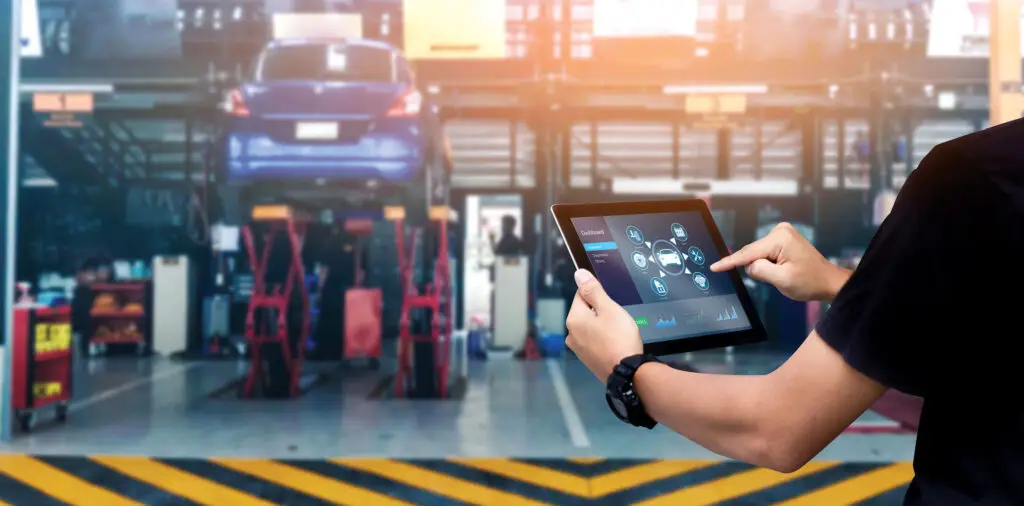A journey from uncertainty to the precise auto body repair techniques of today.
by Tom Bissonnette, executive direction, Saskatchewan Association of Automotive Repairers (SAAR)
I remember when I started my first auto body job. Unibody cars were just emerging in the marketplace and everybody was confused about how to repair them.
You could not just chain these vehicles down. You had to use something called pinch weld clamps. Measuring could no longer be done by eye. You actually had to use a tape measure and a tram bar. Also, corrosion protection was unheard of, much less dressing the pinch weld marks caused by the frame clamps. Taking trim and door handles off to paint was seldom considered, even when new panels were installed, and the body men who went the extra mile used a spray can to paint under emblems and trim before they sent the vehicle to the paint shop.
We did not know what we didn’t know.
Once I-CAR education and training came along and started explaining the how and why of repairing these vehicles, things started to change. This change was slow at first because the insurance companies told us, “We don’t pay for those procedures,” or “You are the only shop asking for that.” Eventually, they clued into the fact that these procedures were necessary to deliver a safe and quality repair.
I remember the first time I saw a vehicle get towed in with an airbag that had been activated. It was in 1989 or the early 90s when I was working for a local Chrysler dealer. A rear-wheel-drive 5th Avenue was brought to the shop with the one and only driver’s side airbag hanging over the steering wheel. I immediately went to the service department to find out what we needed to do to properly replace this assembly. They had no idea, and as far as they knew, the only information from Chrysler on auto body repairs pertained to wind whistles and water leaks. I-CAR again came to our rescue and detailed what components needed to be changed, and the insurance company reluctantly went along with their advice.
“I put most of the blame for situations like this on the body shops that simply have not taken the time to get proper training or become aware of OEM procedures.”
For several years after this incident, I had a number of customers show up asking why their airbags did not deploy during a significant crash, or why they did deploy on a minor bump. I honestly did not have an answer for them because I did not know that maybe these airbags needed to be reprogrammed or have some codes cleared.
We did not know what we didn’t know.
We continued in a fog for a number of years, learning about things like weld-through primers, two component paints, high-volume low-pressure (HVLP) spray guns, mechanical measuring, and even computerized measuring on frame-damaged vehicles. Quite honestly, it was about 20 years of not really having any guidelines on how to properly repair crash-damaged vehicles (with the exception of I-CAR).
Then, all of a sudden, we started seeing vehicles with detailed instructions from the manufacturer that explained how they wanted their vehicles repaired. We started noticing exotic combinations of metal like boron steel, high-strength steel, and aluminum. We started needing to know what types of metal we were working on so that we could use the proper welder MIG (metal inert gas), MIG brazing, or resistance welding. Soon, we were gluing panels and using rivets to attach the panel to a vehicle.
“I blame the insurance companies that turned a blind eye to OEM procedures (because they cost more), assuming that the collision shop is the expert and knows how to properly repair every vehicle…”
I remember working on a simple Chevrolet Cruze notchback. We changed the rear quarter panel, which required MIG brazing where the panel joined to the roof, resistance welding on the inner dogleg, and panel bonding material and rivets on the lower edge of the panel. I wonder how many shops have replaced those panels simply using a MIG welder?
They did not know what they should have known.
I put most of the blame for situations like this on the body shops that simply have not taken the time to get proper training or become aware of OEM procedures. At the same time, I blame the insurance companies that turned a blind eye to OEM procedures (because they cost more), assuming that the collision shop is the expert and knows how to properly repair every vehicle that comes to their shop.
You would think that there would be some type of national accreditation that would compel body shops and insurance companies to insist on following OEM procedures, especially after the John Eagle lawsuit in the USA.
Now we know, and we can’t unknow what we know.
In retrospect, the evolution of auto body repair has been a journey from the realm of the unknown to a world of knowledge and precision. The past is a reminder of the industry’s transformation, from a place where ignorance prevailed to a space where knowledge is cherished. As we reflect on this journey, we realize that we can’t unlearn what we now know. The imperative for precision and safety is here to stay, and it’s our collective responsibility to ensure that every auto body repair adheres to the highest standards.
Editor’s note: In the John Eagle lawsuit, a Texas jury awarded over $31.5 million to a couple injured in a car fire caused by improper repairs by John Eagle Collision Center. The Dallas-area repair shop used glue instead of welds on a 2010 Honda Fit repair work, exacerbating the severity of the crash. The John Eagle lawsuit case reminds industry of the critical importance of following OEM auto repair guidelines.

